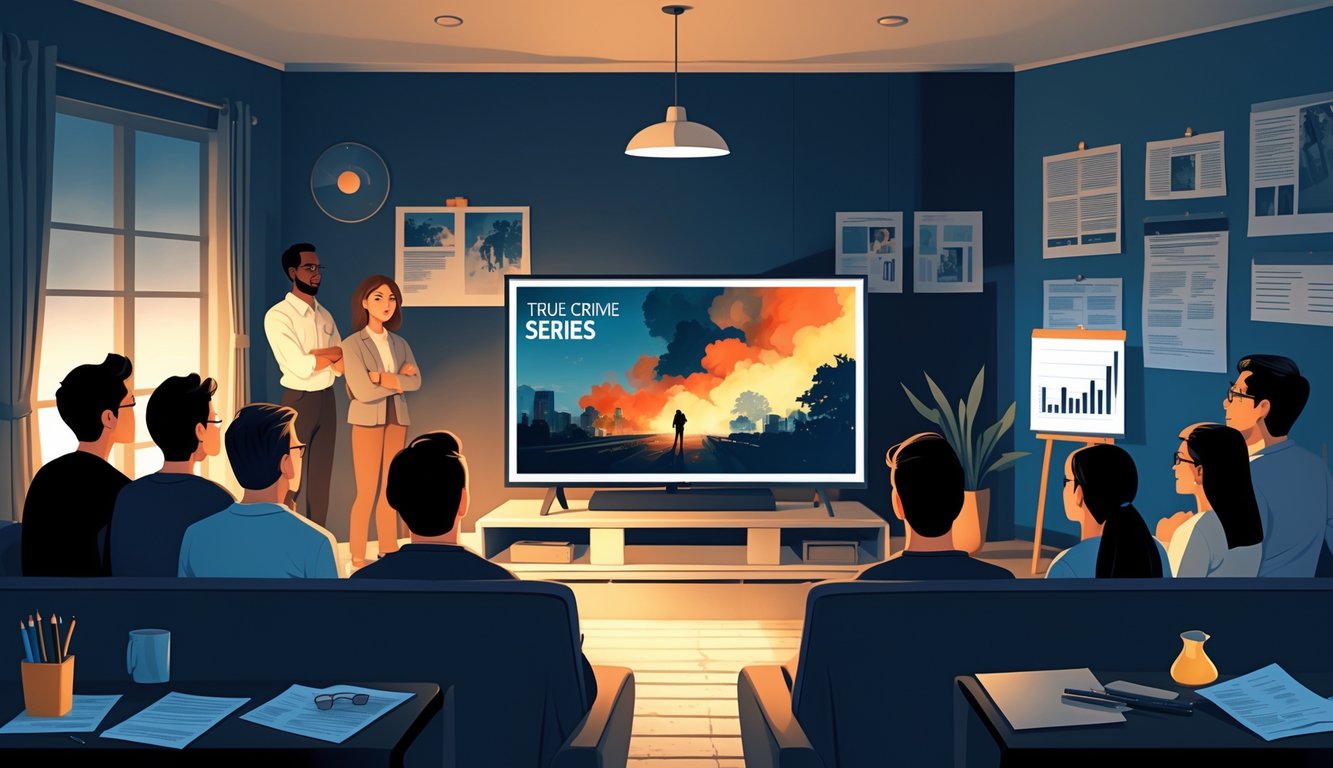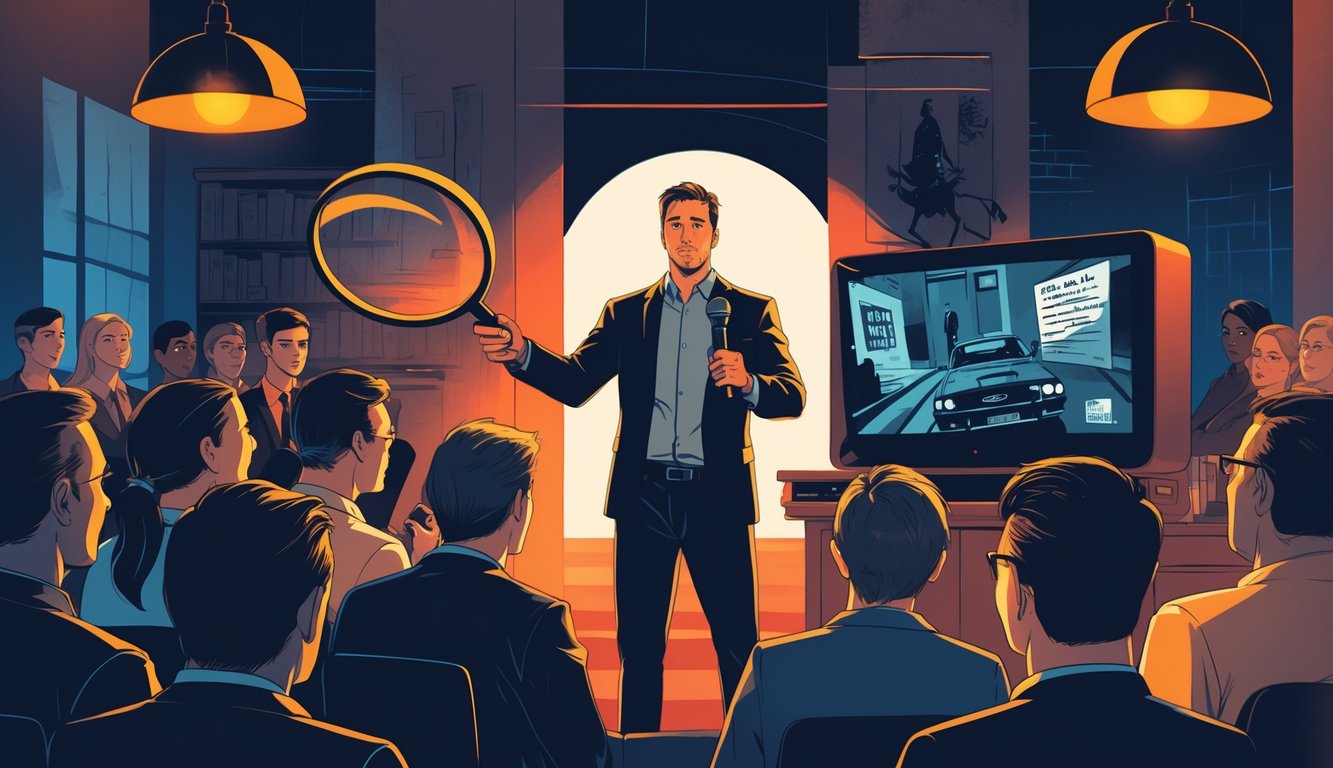
Storytelling Techniques That Captivate Viewers

I’m sitting on my living room floor, popcorn everywhere, and I keep catching myself: no matter how much real footage they use, certain tricks always get me. Narrative stunts, dramatic cutaways, bold investigative leaps—these series don’t care if you’re ready, they just drag you along. “Wild Wild Country”? That one didn’t even let me breathe. It’s like prepping for a criminal law exam you never signed up for.
Dramatic Narratives and the Cliffhanger Effect
People blame TikTok for our attention span, but honestly, “American Nightmare” on Netflix had me glued to the screen till 3 a.m. chasing the next cliffhanger. Not subtle at all. There’s always a dramatic voiceover, a close-up on a suspect, an ominous music cue—bam, episode over. Spoil the twist for your friend, and you’re dead to them.
Cliffhangers sound cheap, but apparently there’s a formula. Every episode leaves something unresolved, every answer just opens another can of worms. It’s like a sock drawer full of mismatches, only you’re sorting alibis and witness statements. Non-linear timelines, missing context, reenactments—these tricks boost viewer engagement so reliably, producers can basically predict when you’ll binge or bail. And I keep falling for it, every single time.
Blending Documentary with Dramas
So, halfway through “The Confession Tapes,” I’m just sitting there thinking—if you swapped the real case files for some HBO writer’s fever dream, would I even notice? Maybe, but only because the mugshots look like bad high school ID photos. The whole genre’s trick is this weird mashup: actual interviews, but then suddenly we’re in a dimly lit re-enactment with actors who look nothing like the real people, and then—bam—text overlays, like it’s 2006 and I’m back on AIM. It’s part documentary, part drama, and honestly, sometimes it feels like neither.
There’s this constant back-and-forth: survivors spilling their guts, actors fumbling through blurry flashbacks, random text messages popping up. The series will show you grainy police footage to prove it’s “real,” then toss you into a moody dramatization, and somehow in four minutes, months of investigation just vanish. Producers are totally riffing on both old-school journalism and prestige TV, and I swear, the result just wrecks my sense of what’s real and what’s not. Is it intentional? Probably. Or maybe everyone’s just winging it.
Investigative Journalism in True Crime
Can someone explain how Ingrid Johnson, who’s apparently an English instructor at Virginia Tech, keeps hundreds of students focused? I can’t even keep my cat out of my cereal. But she claims the real draw of true crime is digging into the messy context—sifting through legal docs, poking holes in police reports, and questioning news coverage from a decade ago. I’ve definitely lost entire evenings cross-referencing names from “Dear Rachelle” or whatever latest obsession, hoping for some kind of closure that never comes.
The best series? They drag you behind the scenes. You get hosts cold-calling retired cops, chasing down FOIA requests, pinning photos to whiteboards—sometimes the camera just lingers and you’re like, “Should I be seeing this?” There’s this almost desperate need for accuracy, then suddenly—oh, here’s a random DNA expert with a theory that makes zero sense, right before the ad break. Fans eat it up. I mean, apparently, true crime fans binge five-plus hours of podcasts a week. Guilty as charged. My Sunday nights are just gone.
Streaming Giants and the True Crime Renaissance
People are binging these miniseries like it’s some kind of endurance sport. The industry moves at breakneck speed—Netflix drops a global hit, the next week Hulu’s got an eight-part exposé, and then Peacock shows up like, “Hey, remember us?” It’s wild. Streaming platforms all have different budgets and strategies, but somehow it’s a domino effect: suddenly a doc sparks a national debate, or—get this—lawyers start referencing episodes in court. Weirder things have happened.
Netflix and the Creation of Modern Crime Series
Netflix. Where do I even start? They basically hijacked the way everyone thinks about true crime. I remember fighting with my brother about whether Making a Murderer would tank, but nope, it blew up. Suddenly, binge-watching became this weird event—my phone just blew up with friends yelling about police screw-ups and courtroom drama. The global release thing? Actually genius. The Staircase, Don’t F**k With Cats—they went viral everywhere. I mean, who in Brazil cares about Wisconsin murder cases? Apparently, everyone.
Here’s a thing: after a new series drops, old cases start trending. Streaming platforms want that. They want every show to feel urgent, and it works. Production companies now pitch straight to Netflix, praying for that one-week media circus. Sometimes it actually leads to new investigations, which is both cool and kind of terrifying.
The Impact of HBO and HBO Max
Everybody acts like HBO is old-school, but then you watch The Jinx and—nope, they’re still the best at this. That show still gives me chills. HBO takes its time, goes for depth instead of speed. They actually talk to prosecutors before filming. Who does that? I’ll Be Gone in the Dark had interviews so raw I started doubting rumors I’d heard in my own hometown.
HBO Max is just stacking their lineup with imports and originals, so you get The Case Against Adnan Syed one week, then some random British crime doc the next. Critics love to compare everyone else to HBO’s slow-burn approach, and honestly, they’re not wrong. My friend who works at a media law firm said HBO’s legal team pre-screens everything, which is way tighter than what you see elsewhere.
And, yeah, every Emmy season, HBO’s right in the thick of it. I guess that means something.
Hulu, Peacock, and Emerging Competitors
Hulu’s strategy: just get the series out fast. The Act, Wild Crime—they just kind of appear, and then everyone’s talking about them. Hulu mixes dramatizations with straight documentaries, sometimes so close to the real news footage it gets confusing. They love trending, unresolved cases. Not sure if that’s good or just lazy.
Peacock’s all about exclusive “first-look” stories—sometimes they beat cable, sometimes not. Dr. Death was suddenly everyone’s Monday small talk, which I did not see coming. Random fact: Peacock actually pays police consultants to fact-check their reenactments. It shows, I guess, even if the pacing feels rushed. Other platforms try to pivot to broader investigative stuff, but honestly, most of it just blurs together.
Everyone’s desperate to find “the next big case,” so now even tiny platforms are grabbing local stories I have to Google to check if they’re real. Once in a while, you can tell someone actually did the homework—except for that one series that got pulled for screwing up the facts. Awkward, but at least I remember it.



